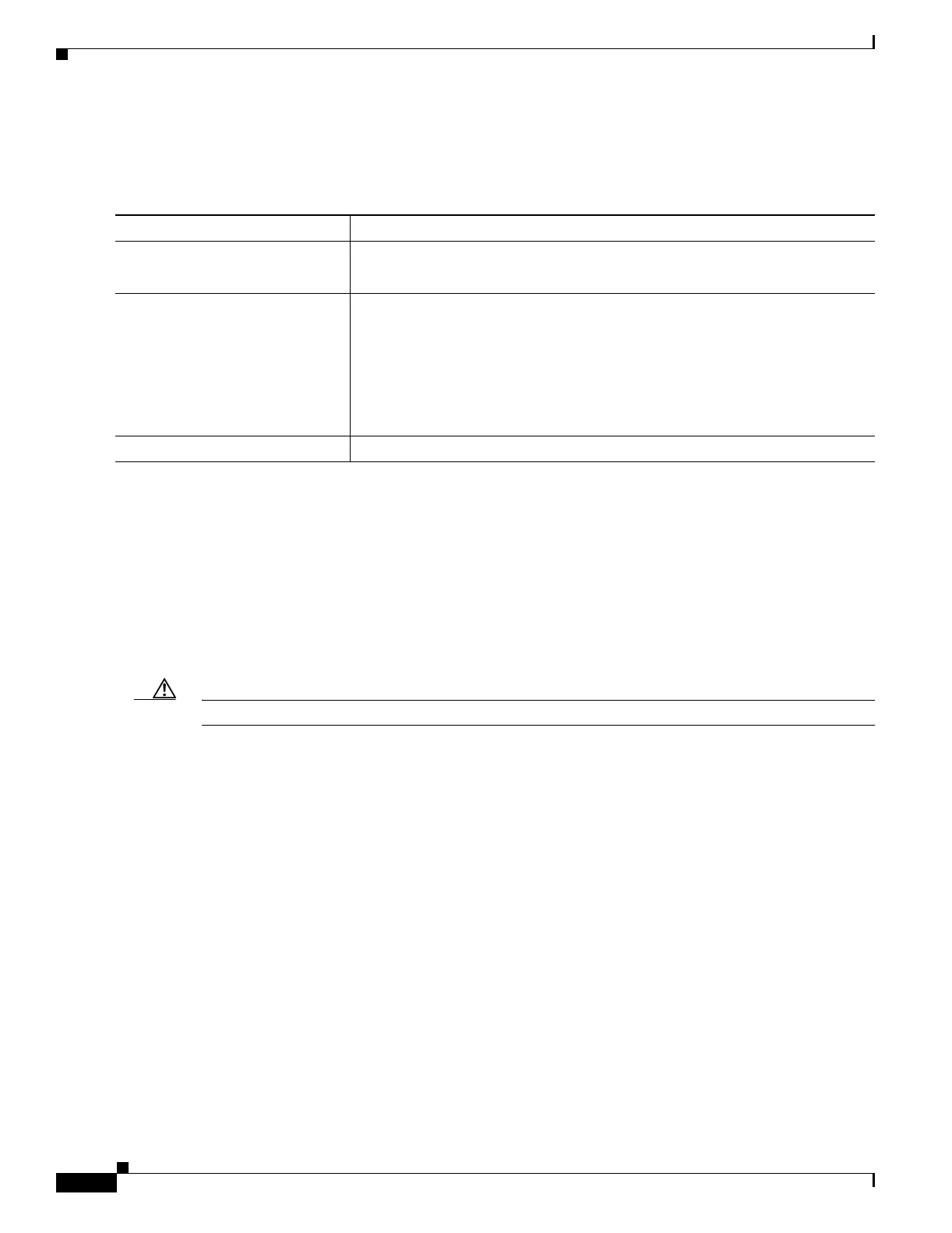B-4
Catalyst 3550 Multilayer Switch Software Configuration Guide
78-11194-09
Appendix B Working with the Cisco IOS File System, Configuration Files, and Software Images
Working with the Flash File System
Creating and Removing Directories
Beginning in privileged EXEC mode, follow these steps to create and remove a directory:
To delete a directory with all its files and subdirectories, use the delete /force /recursive
filesystem:/file-url privileged EXEC command.
Use the /recursive keyword to delete the named directory and all subdirectories and the files contained
in it. Use the /force keyword to suppress the prompting that confirms a deletion of each file in the
directory. You are prompted only once at the beginning of this deletion process. Use the /force and
/recursive keywords for deleting old software images that were installed by using the archive
download-sw command but are no longer needed.
For filesystem, use flash: for the system board Flash device. For file-url, enter the name of the directory
to be deleted. All the files in the directory and the directory are removed.
Caution When files and directories are deleted, their contents cannot be recovered.
Copying Files
To copy a file from a source to a destination, use the copy [/erase] source-url destination-url privileged
EXEC command. For the source and destination URLs, you can use running-config and startup-config
keyword shortcuts. For example, the copy running-config startup-config command saves the currently
running configuration file to the NVRAM section of Flash memory to be used as the configuration
during system initialization.
You can also copy to and from special file systems (xmodem:, ymodem:) as the source or destination
for the file from a network machine that uses the XMODEM or YMODEM protocol.
Network file system URLs include ftp:, rcp:, and tftp: and have these syntaxes:
File Transfer Protocol (FTP)—ftp:[[//username [:password]@location]/directory]/filename
Remote Copy Protocol (RCP)—rcp:[[//username@location]/directory]/filename
Trivial File Transfer Protocol (TFTP)—tftp:[[//location]/directory]/filename
Local writable file systems include flash:.
Command Purpose
Step 1
dir filesystem: Display the directories on the specified file system.
For filesystem:, use flash: for the system board Flash device.
Step 2
mkdir old_configs Create a new directory.
The command example shows how to create the directory named old_configs.
Directory names are case sensitive.
Directory names are limited to 45 characters between the slashes (/); the name
cannot contain control characters, spaces, deletes, slashes, quotes, semicolons,
or colons.
Step 3
dir filesystem: Verify your entry.

